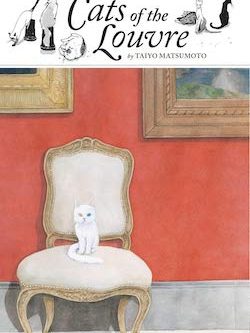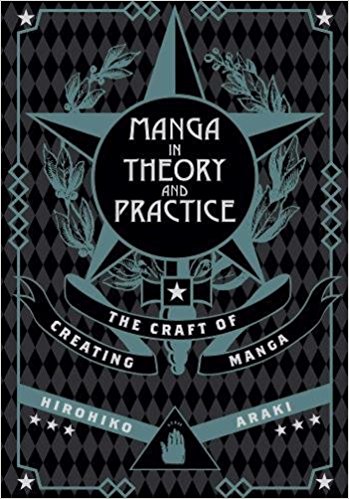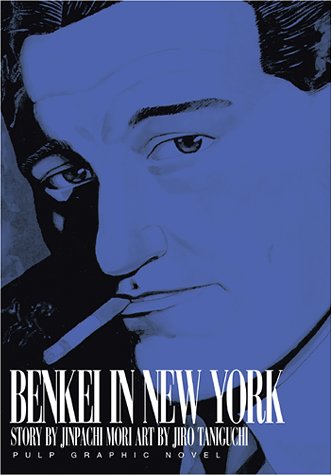In 2007, NBM Comics-Lit published Nicolas de Crecy’s Glacial Period, the first in a series of graphic novels commissioned by the Louvre Museum. The goal of Glacial Period — and the four books that followed it — was to introduce readers to the richness and complexity of the Louvre’s vast collections through a familiar medium: comics.
The artists’ strategies for bridging the divide between fine and sequential art have varied. In Glacial Period, for example, a team of anthropologists unearth the Louvre’s collections, which have been buried under ice for a millennium. The scientists try to make sense of the objects they discover, not unlike a group of aliens speculating about the purpose of a Coke bottle or an Etch-A-Sketch. Other novels are more fanciful: Eric Liberge’s On the Odd Hours reads like a classy version of Night at the Museum, in which the museum’s iconic pieces come to life, roaming the empty galleries until the night watchman can subdue them. Still others are explicitly historical: Bernar Yslaire and Jean-Claude Carriere’s Sky Over the Louvre, for example, stars two of the French Revolution’s best-known bad boys: Maximilien Robiespierre and David.
Hirohiko Araki’s Rohan at the Louvre, by contrast, takes its cues from the world of J-horror, using the Louvre as the setting for a nifty ghost story. In the book’s opening pages, we’re introduced to Rohan, an aspiring manga artist who lives with his grandmother in a nearly deserted rooming house. (N.B. Fans of JoJo’s Bizarre Adventure may recognize Rohan as a minor character from one of the later volumes of the series, though prior knowledge of JoJo is not necessary for appreciating Louvre.) The unexpected arrival of a beautiful divorcee turns the normally placid household upside down with tearful drama. Within a week of her arrival, however, Nanase disappears into the night, never to be seen again.
We then jump forward ten years: Rohan, now 27, is a successful manga artist who decides to visit the Louvre to view what Nanase once described to him as “the darkest painting in the world.” The painting, he learns, has never been publicly displayed; it sits in a long-forgotten basement vault. What transpires in the bowels of the Louvre is a mixture of old-fashioned Japanese ghost story and contemporary slasher flick; if one were to update Masaki Kobayashi’s Kwaidan for today’s audiences, the denouement of “The Black-Haired Woman” or “Hoichi the Earless” might look like the climatic scene of Rohan.
For all the gory zest with which that scene is staged, Rohan‘s artwork is uneven. Araki’s command of color is impeccable: the prelude is bathed in a golden light, while the scenes at the Louvre are rendered in a cooler palette of grey, blue, and pure black, a contrast that nicely underscores Rohan’s journey from youthful inexperience to maturity. Araki’s sexy character designs are another plus; even the most muscle-bound figures have a sensual quality to them, with full lips and eyes that that moistly beckon to the reader.
When those figures are in motion, however, Araki’s artwork is less persuasive. Rohan and Nanase’s bodies, for example, rotate along several heretofore undiscovered axes; only Power Girl and Wonder Woman twist their bodies into more anatomy-defying poses. Araki’s fondness for extreme camera angles similarly distorts his characters’ bodies, as he draws them from below, behind, or a forty-five degree angle, eschewing simple frontal views whenever possible. Such bodily distortions are meant to give depth to the picture plane, I think, but the result is curiously flat; the characters often look like paper dolls that have been bent into unnatural shapes, rather than convincing representations of walking, talking people.
What Araki’s artwork does best is convey a sense of place. The opening pages are lovely, offering us a peek into a world that is largely — though not completely — untouched by modernity. Araki takes great pains to render the boarding house’s environs — its rock garden and gnarled pine trees — as well as its interior of spartan rooms and sliding doors. We feel the stillness and seclusion of the inn, and bristle when Nanase’s cell phone pierces that tranquility.
Likewise, Araki captures the Louvre in vivid detail. He guides the reader through its galleries, marching us past the Nike of Samothrace and several rooms of seventeenth- and eighteenth-century paintings. We follow Rohan’s gaze upwards towards vaulted ceilings encrusted in sculptural detail and elaborate frescoes, pausing to meet the gaze of the Dutch burghers and Roman gods whose images are mounted on the gallery walls. We then descend into the museum’s extensive network of tunnels and storage vaults, a veritable catacombs of neglected and obscure objects spread out over hundreds of acres. Although these dark, claustrophobic spaces make an ideal setting for a horror story, they’re also a powerful reminder of the Louvre’s history; the tunnels are remnants of a twelfth-century fortress that once occupied the site of the present-day museum.
If the artwork is, at times, overly stylized, Rohan at the Louvre is still an imaginative celebration of the Louvre Museum, conveying its scale, age, and majesty. Araki’s book is not as sophisticated or ambitious as some of the other titles in this series, but is one of the most dramatically satisfying, achieving a near-perfect balance between telling a ghost story and telling the Louvre’s own story. Recommended.
ROHAN AT THE LOUVRE • BY HIROHIKO ARAKI • NBM/COMICS-LIT • 128 pp. • NO RATING





2 thoughts on “Rohan at the Louvre”
Comments are closed.